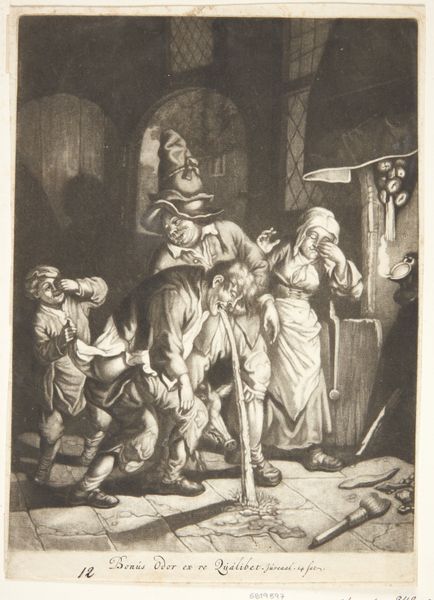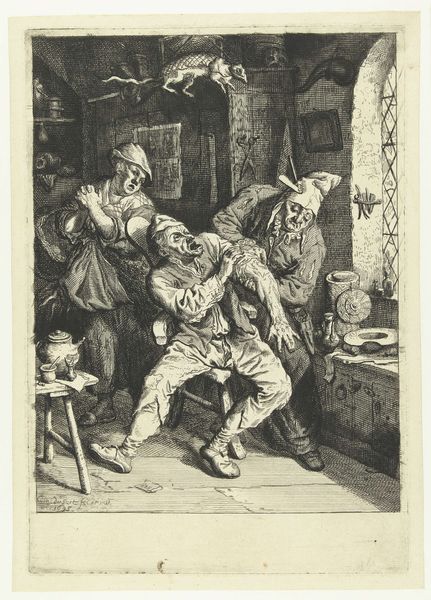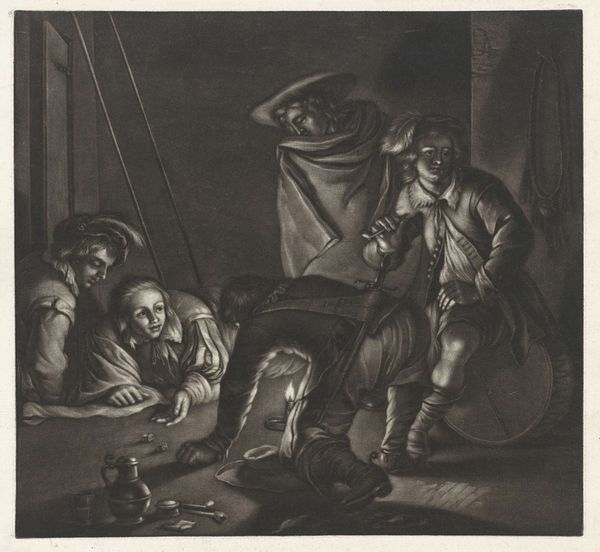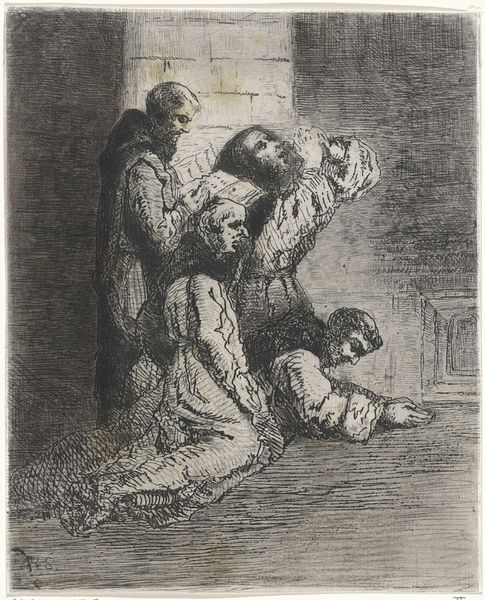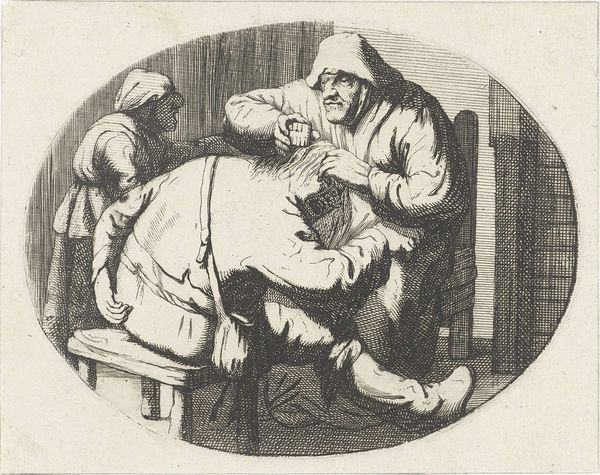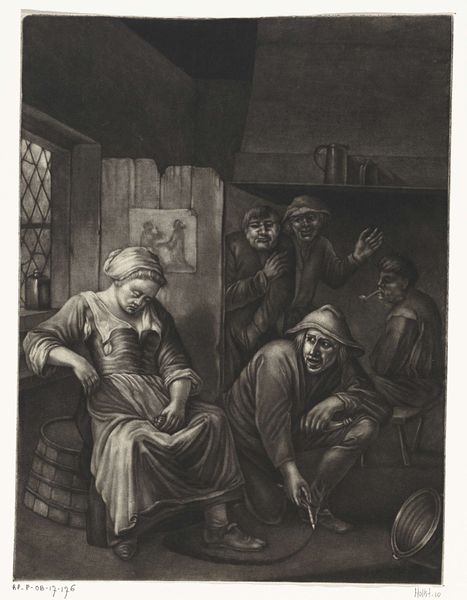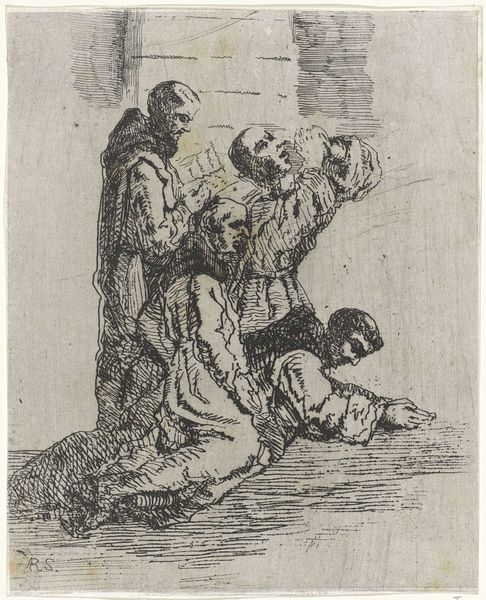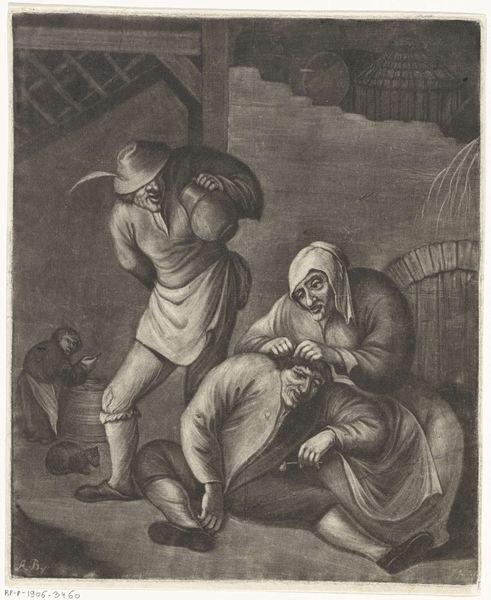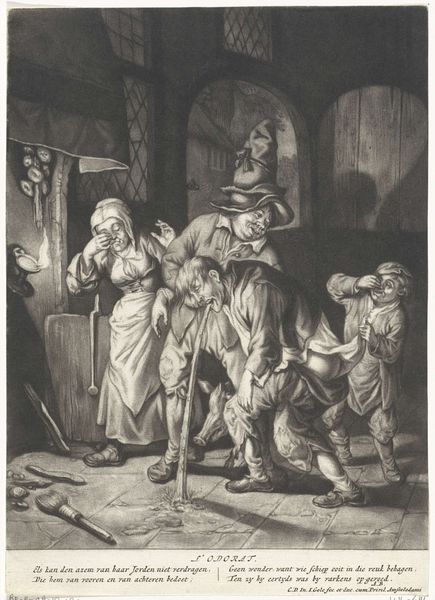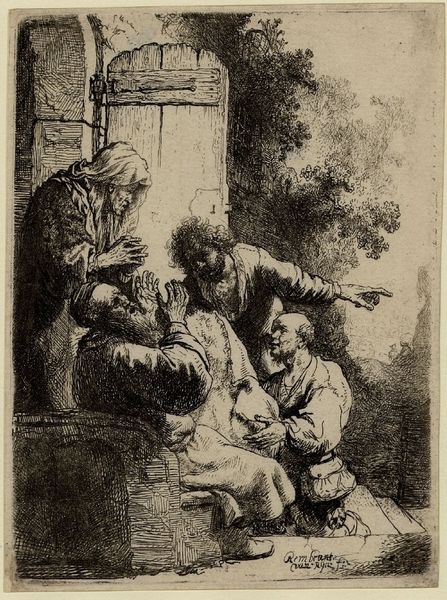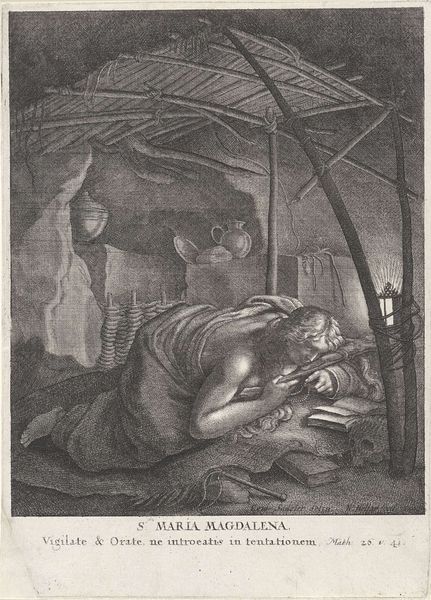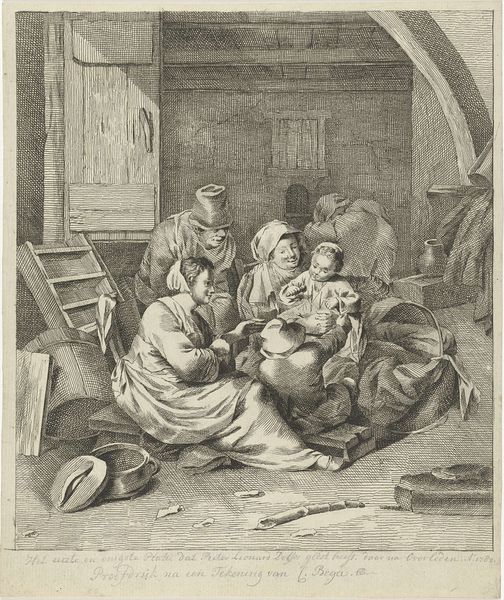
print, etching
#
narrative-art
#
dutch-golden-age
# print
#
pen illustration
#
etching
#
pencil sketch
#
caricature
#
figuration
#
ink drawing experimentation
#
genre-painting
Dimensions: height 152 mm, width 193 mm
Copyright: Rijks Museum: Open Domain
Curator: This is "An Old Woman Delousing a Man," a print by Willem Basse, likely created sometime between 1633 and 1672. What strikes you first about it? Editor: Immediately, a kind of weary intimacy. They’re crowded together in this dimly lit interior, and there’s something almost unbearably mundane about the whole scene. Like a fly-on-the-wall glimpse into someone’s incredibly average afternoon. Curator: Exactly! Basse captures a slice of everyday life. Delousing was a common practice, especially among the lower classes. It’s unromantic, certainly, but so real. It serves as a sharp reminder of the harsh realities of 17th-century life in Dutch society. Editor: Harsh, but also strangely sweet, right? The way the woman concentrates, the man endures… there's a tenderness there despite the less-than-glamorous activity. And the contrast with the guy lumbering in with jugs slung over his shoulder—he adds this weird comedic tension. Curator: The print's aesthetic quality enhances that impression. Etching and engraving allowed for detailed lines that feel spontaneous, but capture so much human detail, like the old woman's focused brow. Consider, also, how prints democratized art. This image, and others like it, could be circulated and reproduced relatively easily, expanding viewership beyond the wealthy elite. Editor: And that sense of accessibility extends to the subject, I think. You don't need to be a connoisseur to understand what's going on here. It bypasses the grand narratives of history and mythology to offer this raw, almost voyeuristic moment. It makes you think about all the overlooked stories. Curator: Yes! I always find myself drawn to this piece for that reason. It reminds me of how much value can be found in documenting the so-called ordinary. It broadens how we engage with historical narratives beyond courtly portraits. Editor: Absolutely. A small snapshot of a world we're only ever going to experience secondhand. I come away feeling like I actually *know* something about the lives of people back then. Curator: A moment captured, preserved, and still whispering secrets to us across the centuries. That’s quite something, isn’t it?
Comments
No comments
Be the first to comment and join the conversation on the ultimate creative platform.

